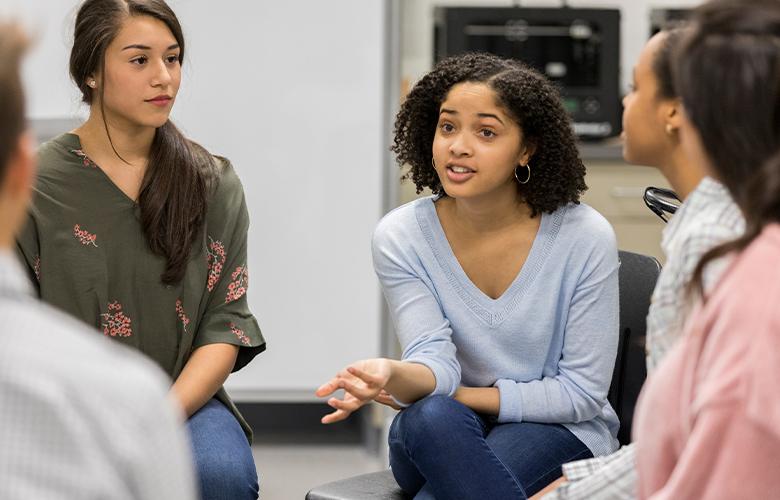
As educators turn their attention toward next school year, many are grappling with the challenges of supporting students through the aftershocks of this spring. The coronavirus pandemic and the murders of Ahmaud Arbery, Breonna Taylor, and George Floyd have laid bare this country’s racial inequities. Providing students with the social and emotional tools they need to navigate these complex times is paramount for the sake of their immediate well-being.
Yet, many resources designed to promote student’s social and emotional learning (SEL) do not take race into account. By failing to acknowledge students’ racial and cultural diversity, “colorblind” SEL programs, which are de facto grounded in the norms and expectations white culture, can imply that the differences that emerge from students’ diverse backgrounds are deficits. Further, by ignoring the ways that systemic racism can affect students’ development of SEL skills, these programs imply that the social and emotional challenges that students do encounter are the result of individual shortcomings, rather than the byproduct of oppression.
In contrast, an anti-racist approach to SEL takes a view that recognizes and values the diverse social and emotional skills students bring with them to the classroom. Further, it relates students’ individual social and emotional struggles to their lived experience with racial injustice and social inequity.
Restorative justice (RJ) presents an opportunity to do SEL better. RJ is a model and philosophy of conflict resolution that has roots in Maori traditions. It is premised on repairing harm when one’s actions disrupt the community and is often considered an alternative to punitive school discipline.
For RJ to be effective, schools must first build the community that members are accountable to. RJ does this by convening “circles”—structured conversations that aim to build empathy and connection by inviting participants to speak and listen from the heart. These community-building circles are a critical tool for anti-racist SEL. Their openness provides opportunities to discuss institutional and interpersonal racism.
When implementing RJ, racially homogenous circles can be used initially to shield students of color from wounds that White students may cause in their first explorations of race. Over time, the circles should shift toward racial integration, and structured prompts should facilitate honest discussion of how race and racism shape participants’ lives within and beyond school.
For more on restorative justice, the need for an anti-racist approach to SEL, and additional information on anti-racist teaching, see the following resources:
- Why We Can’t Afford Whitewashed Social Emotional Learning
- Center for Restorative Justice at Suffolk University
- Resources to Support Anti-racist Learning
Meg Caven’s research explores the relationship between education, social inequality, and social policy. She is particularly interested in the implementation and effect of school discipline reform. |

Comments
Add new comment